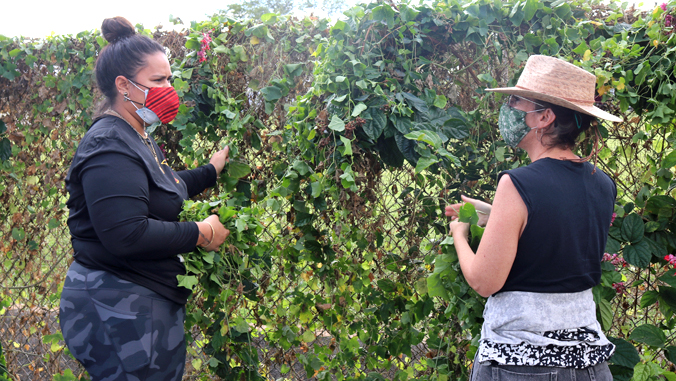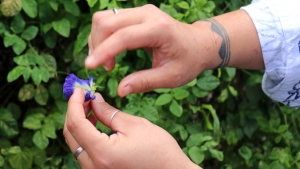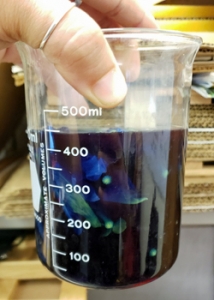
An outdoor University of Hawaiʻi at Mānoa event founded on the Hawaiian concept of ʻāina (Grandmother Earth) connection has been given the green light to safely resume during the spring 2021 semester. Aloha ʻĀina Fridays, a free series hosted by the Native Hawaiian Place of Learning Advancement Office, Campus Arboretum and Buildings and Grounds Management gathers students, faculty and staff to get to know and learn ways they can care for plants on campus.
The program promotes connecting with ʻāina while connecting with others as a way to heal and recharge. UH Mānoa Native Hawaiian affairs program officer Kaiwipuni Lipe leads the Aloha ʻĀina program and believes the concept is needed now more than ever.
“We thought about all the stuff being offered online right now. LOTS of presentations. Not a bunch of options for connecting with ʻāina directly,” said Lipe. “We know connecting with ‘āina is really nourishing for overall well-being and especially right now after being isolated for so long,”
To adhere to COVID-19 safety guidelines, the monthly events are limited to five UH Mānoa students and employees who are required to follow social-distance guidelines and wear masks. Since the semester started, three events were held on-campus.

On March 5, participants cleared fallen leaves and fruit from sprawling Australian Lemon-Scented Gum trees (Corymbia citriodora) next to the Biomedical Sciences building. They also yanked a widespread weed nearby called, Scarlet Gourd (Coccinea grandis) that choked out Easter Lily Vines (Beaumontia grandiflora) from the Himilayan tropics. Deep blue flowers known as Butterfly Pea (Clitorea ternatea) were also plucked from an adjacent fence to be used to make a dye for arts and crafts.

The Aloha ʻĀina series dedicated to caring for plants is also referred to as Huli ka lima i lalo (turning one’s hands down to the earth) and is guided by UH Mānoa campus arboretum curator Nōweo Kai. She is the campus’ botanist and oversees more than 4,000 plants spread across UH Mānoa.
At each event, Kai describes how the specific plants focused on that day came to be a part of the university, where they come from and how to mālama (care) for them. She believes the ʻāina events can provide a healthy outlet during the pandemic. “With increasing online attendance, it is essential to foster a sense of physical space,” she explained.
Aloha ʻĀina Fridays are scheduled for April 16 and May 7. Anyone interested can register to participate.
- Related UH News story: Exploring the meaning of Aloha ʻĀina, September 3, 2019
The series launched in fall 2019 under Lipe who wanted to help the on- and off-campus communities to explore aloha ʻāina together. UH Mānoa has been striving to become a Native Hawaiian place of learning. Each event begins with an introduction of the location’s ʻāina, ʻili (subdivision) and ahupuaʻa (land division). It’s followed by individual introductions by each participant who identify their ahupuaʻa and UH departments. For Lipe, the relationships fostered at the events are simple but quench what so many crave for these days.
“I think connection to each other in safe, distant, but real ways is really nice,” Lipe said. “Doing something physical away from our laptops in a guided and focused way is really good for our well-being.”
This effort is an example of UH Mānoa’s goal of Becoming a Native Hawaiian Place of Learning (PDF), one of four goals identified in the 2015–25 Strategic Plan (PDF), updated in December 2020.

